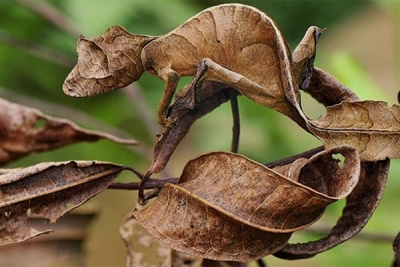
Camouflage, also called cryptic coloration, is a defense or tactic that organisms use to disguise their appearance, usually to blend in with their surroundings. Organisms use camouflage to mask their location, identity, and movement. This allows prey to avoid predators, and for predators to sneak up on prey.
A species’ camouflage depends on several factors. The physical characteristics of the organism are important. Animals with fur rely on different camouflage tactics than those with feathers or scales, for instance. Feathers and scales can be shed and changed fairly regularly and quickly. Fur, on the other hand, can take weeks or even months to grow in. Animals with fur are more often camouflaged by season. The arctic fox, for example, has a white coat in the winter, while its summer coat is brown.
The behavior of a species is also important. Animals that live in groups differ from those that are solitary. The stripes on a zebra, for instance, make it stand out. However, zebras are social animals, meaning they live and migrate in large groups called herds. When clustered together, it is nearly impossible to tell one zebra from another, making it difficult for predators such as lions to stalk an individual animal.
A species’ camouflage is also influenced by the behavior or characteristics of its predators. If the predator is color-blind, for example, the prey species will not need to match the color of its surroundings. Lions, the main predator of zebras, are color-blind. Zebras’ black-and-white camouflage does not need to blend in to their habitat, the golden savanna of central Africa.
Credit : National Geographic Society
Picture Credit : Google




